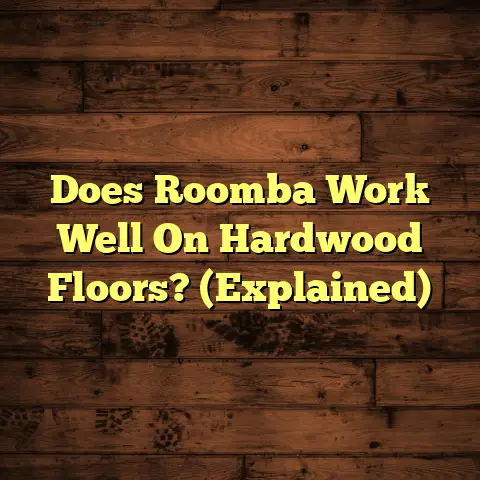Laminate Boxes Needed? (2% Waste Can KILL You!)
Laminate flooring, right? It’s the workhorse of the flooring world.
It takes a beating, shrugs off spills, and looks good doing it.
But don’t let its toughness fool you.
Even with a material as resilient as laminate, the devil is in the details.
And one of those details, often overlooked, is waste.
Specifically, that seemingly insignificant 2% waste factor.
Trust me, ignore it at your peril! It can turn a smooth project into a costly nightmare.
Let’s dive deep and see how to avoid that.
Understanding Laminate Flooring
So, what exactly is laminate flooring?
Think of it as a high-tech sandwich.
You’ve got the wear layer on top, a clear, tough coating that protects against scratches and scuffs.
Underneath that is the design layer, a high-resolution photograph that gives the laminate its wood, stone, or tile look.
And finally, the core layer, usually made of high-density fiberboard (HDF) or medium-density fiberboard (MDF), which provides the stability and structure.
Why Laminate Rocks
Why do people choose laminate? Let me tell you:
- Affordability: It’s generally cheaper than hardwood, tile, or stone.
- Variety: The design options are endless. You want a distressed oak look? Done. A sleek marble finish? Easy.
- Installation: It’s a DIYer’s dream. Most laminate floors click together, no glue or nails needed.
Where You’ll Find It
You’ll see laminate in homes, apartments, offices, and even some retail spaces.
It’s a great choice for:
- Living rooms
- Bedrooms
- Hallways
- Basements (provided moisture is controlled)
The Importance of Accurate Measurement
Before you even think about ordering a single box of laminate, you need to measure your space, and measure it accurately.
I can’t stress this enough.
Why?
Because miscalculations lead to waste. Waste leads to budget overruns. And nobody wants that!
I’ve seen homeowners underestimate their square footage by just a little bit, and end up short a box or two.
That doesn’t sound like much, but imagine this:
You’re nearing the end of your project, feeling great, and then bam!
You realize you’re short.
You run to the store, only to find that the dye lot is different, or worse, the style is discontinued.
Now you’re stuck with mismatched flooring or a half-finished room.
Nightmare fuel, right?
The 2% Waste Factor Explained
Okay, let’s talk about the elephant in the room: that pesky 2% waste factor.
What is it?
Simply put, it’s an allowance for the inevitable scraps, cuts, and mistakes that happen during installation.
Why the Waste?
- Cuts: You’ll need to cut planks to fit around walls, doorways, and other obstacles.
- Mistakes: Let’s be honest, we all make them. A miscut here, a dropped plank there… it happens.
- Unusable Pieces: Sometimes, you’ll get a plank with a damaged corner or a flawed finish.
The Cold, Hard Numbers
2% might not sound like much, but let’s put it into perspective.
Say you’re flooring a 500 square foot room. 2% of 500 is 10 square feet.
That’s enough to cover a small closet or a decent-sized entryway.
According to the National Association of Home Builders, the average cost of laminate flooring installation is between $4 and $11 per square foot.
So, that 10 square feet of waste could translate to $40-$110 down the drain.
Ouch!
Calculating the Required Laminate Boxes
Alright, let’s get down to brass tacks. How do you figure out how many boxes of laminate you actually need?
Here’s the step-by-step:
- Measure the Room: Measure the length and width of your room in feet. Multiply those numbers to get the square footage. If the room isn’t a perfect rectangle, break it down into smaller, more manageable shapes, calculate the area of each, and add them together.
- Add the Waste Factor: Multiply your total square footage by 0.02 (that’s 2%). Add that number to your original square footage.
- Check the Box: Look at the laminate boxes. They’ll tell you how many square feet of flooring are in each box.
- Divide and Conquer: Divide your total square footage (including waste) by the square footage per box. Round up to the nearest whole number. That’s how many boxes you need.
Example Time
Let’s say you’re flooring a room that’s 12 feet by 15 feet.
- Room Size: 12 ft x 15 ft = 180 sq ft
- Add Waste: 180 sq ft x 0.02 = 3.6 sq ft. 180 sq ft + 3.6 sq ft = 183.6 sq ft
- Box Size: Let’s say each box contains 20 sq ft of laminate.
- Calculate Boxes: 183.6 sq ft / 20 sq ft/box = 9.18 boxes. Round up to 10 boxes.
You’ll need 10 boxes of laminate for this project.
Consequences of Ignoring Waste Calculation
What happens if you skip the waste calculation and just wing it?
Well, let me tell you some stories from my years in the trenches.
I once had a client who was determined to save money.
He measured his living room, bought exactly enough laminate to cover the square footage, and proudly started installing.
Everything was going great, until he got to the last few rows.
He realized he was short, not by a lot, but enough to leave a noticeable gap along one wall.
He went back to the store, but the dye lot was slightly different.
The new planks didn’t quite match the old ones.
He ended up having to rip up the entire floor and start over with new laminate, costing him time, money, and a whole lot of frustration.
Don’t be that guy!
Selecting the Right Laminate
Choosing the right laminate is about more than just picking a pretty color.
Here are some things to consider:
- Thickness: Thicker laminate is generally more durable and feels more solid underfoot.
- AC Rating: This rating tells you how resistant the laminate is to abrasion, impact, and staining. A higher AC rating is better for high-traffic areas.
- Design: Consider the style of your home and the overall look you’re trying to achieve.
Quality Over Quantity
Don’t skimp on quality to save a few bucks.
Cheaper laminate is often more prone to chipping, cracking, and delamination.
It might also be harder to install, leading to more waste.
Installation Tips to Minimize Waste
Okay, you’ve got your laminate, you’ve done your calculations, now it’s time to install.
Here are some tips to minimize waste:
- Plan Your Layout: Before you start cutting, lay out a few rows of laminate to see how the planks will fit together. This will help you identify any potential problem areas and minimize the number of cuts you need to make.
- Use Leftover Pieces: Don’t throw away those small scraps! You can often use them to fill in gaps around doorways or along walls.
- Stagger Your Seams: This not only looks better, but it also adds strength to the floor.
- Invest in Good Tools: A sharp saw and a tapping block will make your life much easier and reduce the risk of mistakes.
Environmental Impact of Flooring Waste
Let’s not forget about the environmental impact of flooring waste.
Laminate is often made from recycled materials, which is great.
But it’s still a manufactured product, and when it ends up in a landfill, it takes up space and can leach chemicals into the soil.
Sustainable Choices
Here are some ways to make your flooring project more eco-friendly:
- Choose Recycled Content: Look for laminate that’s made from a high percentage of recycled materials.
- Proper Disposal: Instead of throwing your old flooring in the trash, see if you can donate it to a local charity or recycle it.
- Consider the Lifecycle: Think about how long your flooring will last and how easy it will be to maintain. A durable, long-lasting floor is ultimately more sustainable than a cheap one that needs to be replaced every few years.
The Cost of Inattention
So, there you have it.
The 2% waste factor might seem small, but it can have a big impact on your budget, your timeline, and even the environment.
By taking the time to measure accurately, calculate your needs, and install carefully, you can minimize waste and ensure a successful flooring project.
Remember, laminate flooring is an enduring choice, but its endurance depends on your attention to detail from the very beginning.
Don’t let a little bit of waste kill your project!
Happy flooring, folks!





